
Over time, I’ve learned that Nikon lenses are hard to beat for wildlife shots. They’re sharp, focus quickly, and are built to last. Wildlife photography calls for lenses with a long reach. Besides, you need optics with strong image stabilization for shooting by hand and a rugged design that can handle wind, rain, etc. Nikon lenses for wildlife photography tick all these boxes.
 ★★★★★ (5/5)
★★★★★ (5/5)
Based on the results of my field tests, the Nikon AF-S FX NIKKOR 200-500mm f/5.6E is the best wildlife lens for Nikon. It gives you the perfect mix of long reach, high image quality, and reasonable cost. It perfectly tracked quick subjects, delivered sharp photos, and worked flawlessly during outdoor shoots.
When people who read our blog began asking for my top Nikon wildlife lens picks, I took it as a challenge. I tested the most well-known options and invited the FixThePhoto team to help me along the way. Together, we judge the speed and overall performance of every lens.
| Standard Lens | Wildlife Lens |
|---|---|
|
✔️ Small size and weight
|
✔️ Long focal range for distant subjects
|
|
✔️ Reasonable price
|
✔️ Fast autofocus for moving animals
|
|
✔️ Suitable for everyday shooting
|
✔️ Withstand outdoor/wild conditions
|
|
❌ Limited reach – animals look tiny
|
✔️ Top-notch image stabilization
|
|
❌ Sluggish autofocus
|
✔️ Amazing low-light performance
|
|
❌ Struggles in low light or during motion
|
❌ Heavier and bulkier
|
At the start of my wildlife photography career, I used the basic Sony kit lens. It was fine for casual use, but it was of little help when I tried to capture far-off animals. I had to crop every photo heavily, which meant losing sharpness, detail, and far too many great moments.
To make strides in wildlife photography and capture animals in their natural setting, you need serious zoom power. Standard lenses don’t have the reach, and I learned that rather quickly. One day, I spotted a beautiful deer but couldn’t get close without scaring it off. At that moment, it became crystal clear that I needed gear that could go the distance.
Autofocus speed is another big hurdle with regular lenses. Animals are unpredictable, and my kit lens often lagged behind, costing me great shots. A proper wildlife lens offers faster, more accurate focusing. This is paramount when you have just the blink of an eye to capture the scene.
Durability is no less important. Shooting wildlife means working in places where dust swirls, rain falls, and terrain is anything but friendly. Regular lenses can’t take that kind of beating, but dedicated Nikon wildlife lenses are tough enough to handle it all. It is important to have tools that let me bring my vision to life.
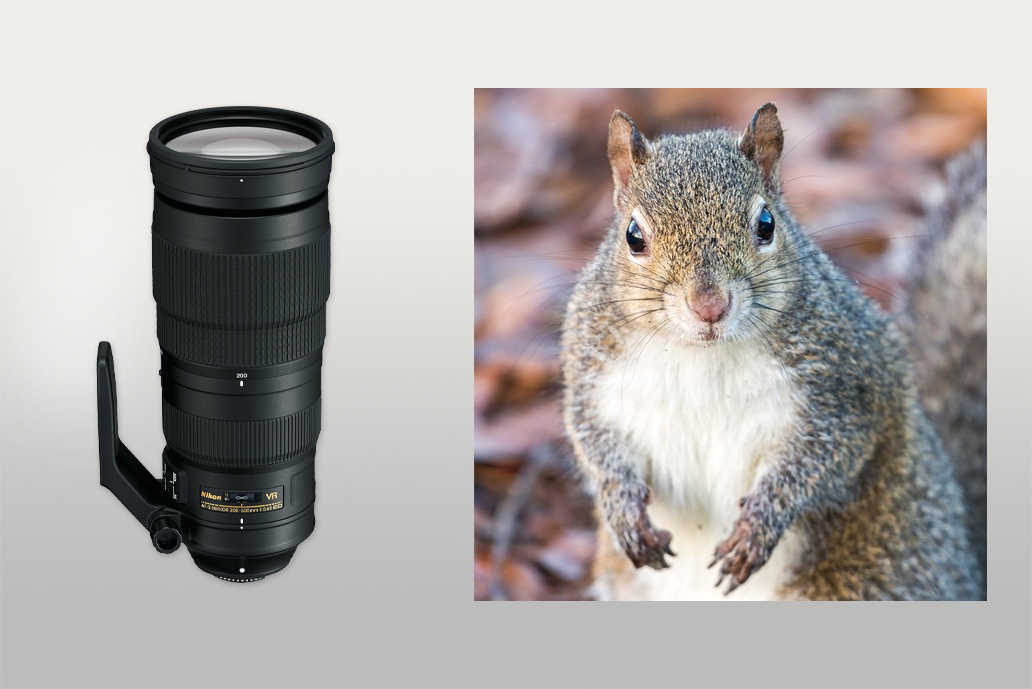
Nikon AF-S FX NIKKOR f5.6E is a terrific lens with extensive capabilities. My first outing with it was in a camouflaged hide, keeping an eye on a small clearing. A fox appeared, edging closer, so I zoomed in for a crisp close-up. Moments later, it sprinted across the clearing, and I zoomed out to catch the action in full.
Paired with my Nikon D500, the lens works remarkably. The 1.5x crop factor gives you the reach of a 300-750mm lens, which is perfect for capturing birds perched high in the canopy. But the real highlight is its close focusing power. I snapped an incredibly detailed shot of an American toad from just over 7 feet away.
From time to time, this lens for Nikon D500 made me think that I was shooting with a semi-macro model. Thanks to the steady VR system, I could shoot handheld under the dark forest canopy without worrying about blur. You can rarely do the same with heavier glass. It didn’t flinch in bad weather, muddy paths, or even after I slipped into wet grass. Considering its price, this is the best Nikon lens for wildlife among its peers.
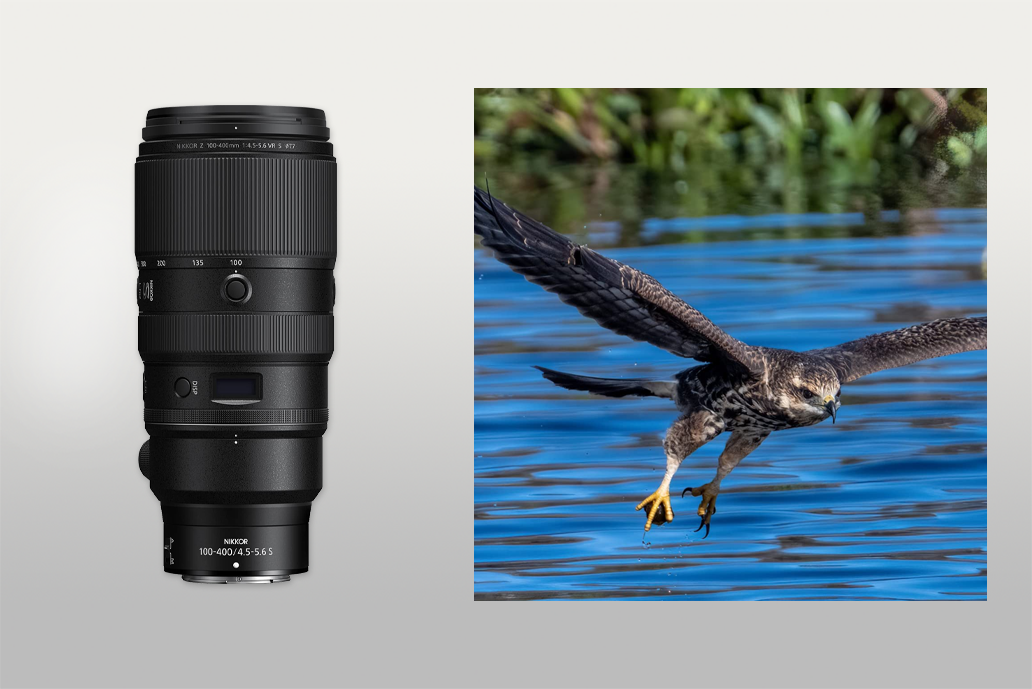
This lens has been in my kit since soon after its official release. Over this time, it has never let me down during wildlife photo sessions. Once, while shooting wild boars at a river, I started at 100mm to show the full setting, then zoomed to 400mm as they came out of the brush. I didn’t have to swap lenses or lose the moment. This lens adapted instantly to my needs, keeping the composition perfect.
When I attach this lens to my Nikon camera, I can take both sharp close-ups and wider shots of animals in their habitats. I like that autofocus is silent and very quick. I never missed a shot, even when taking images of quick-moving hares. Although the f/5.6 aperture at 400mm isn’t the best when lighting is poor, I’ve learned the way out of such situations. Typically, I take photos during golden hour and bump up the ISO when needed.
The best thing about this Nikon lens for wildlife is how comfortable it is to use outdoors. Thanks to its small weight, you can carry it all day long. Besides, it pairs perfectly with mirrorless cameras and is sealed against dust and rain. I’ve tested it in tough weather, and it didn’t disappoint me. Though you may not get a winsome background blur of a 400mm f/2.8, when maintaining distance between your subject and the background, your images will still have a creamy effect.
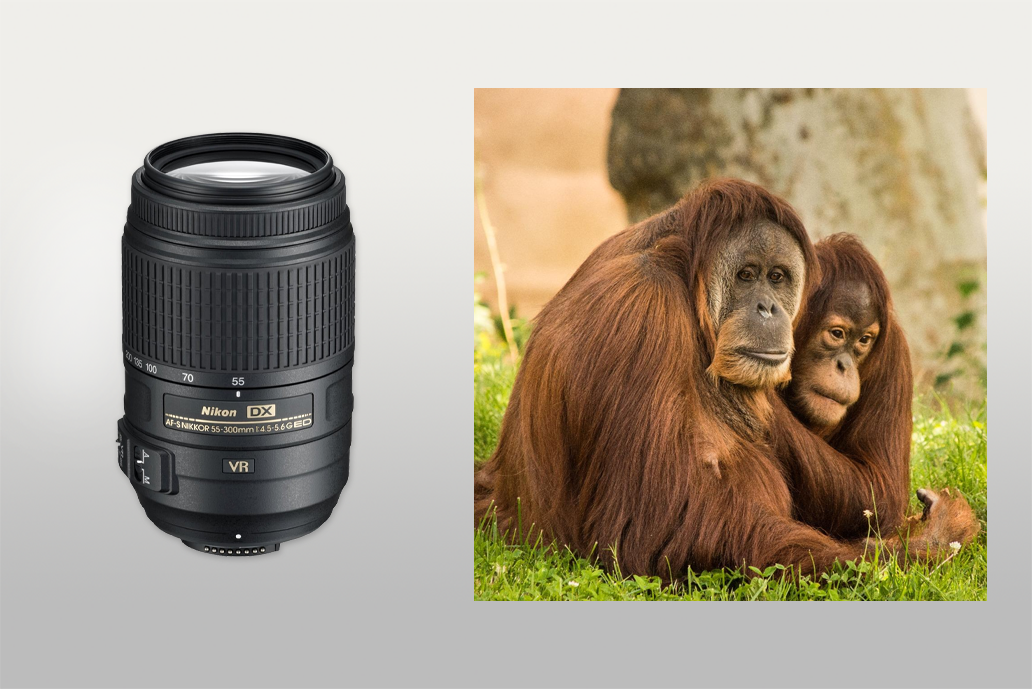
This is one of the most popular Nikon lenses for wildlife among beginner wildlife photographers. I took it with me on morning hikes through a local wetland. That place is full of birds and small animals, which like to hide from humans. With its zoom range equal to 82.5 to 450mm on a DX camera, I got a perfect shot of a heron walking by. I didn’t need to zoom in or crop images afterward. This lens will come in handy if you want to get close to your subjects without disturbing nature.
I wanted to take a photo of a moving squirrel hopping between trees. I managed to catch it frozen in mid-jump using a 1/320s shutter speed. The best thing is that I didn’t need a tripod. The Vibration Reduction feature was helpful when the light was low, especially early in the morning. Pictures came out sharper than I thought, especially at 200mm. There’s some slight blur at 300mm, but the photos are still very good if you know full well how to take images.
However, changing to manual focus wasn’t very easy. There’s no easy manual override, so I had to stop, switch to “M,” and then adjust focus. Because of this delay, I missed a clean shot of a turtle slowly coming out of the water. You should definitely consider this aspect when dealing with animals that move quickly or unexpectedly. All in all, this lens works well in nature and is a good option for beginners, especially if they don’t want to spend lots on shooting gear.
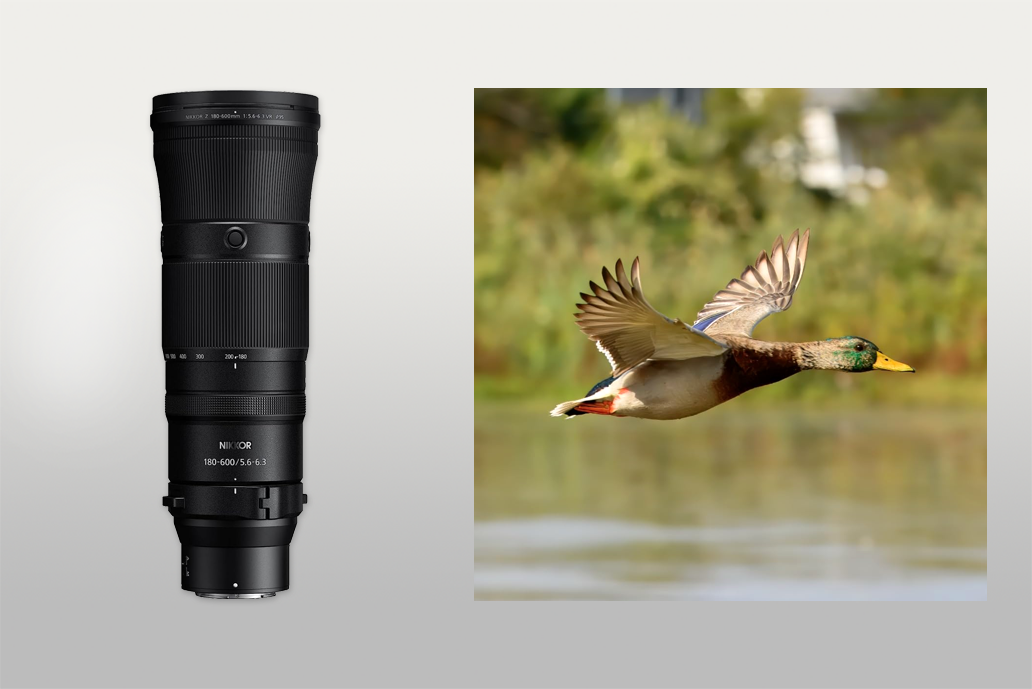
I borrowed this lens from my colleague Ann and took it to the wetlands to see how it works for bird photography. The internal zoom deserves special praise. It didn’t extend, so the lens felt solid and easy to hold. When a buzzard settled on a branch far away, I zoomed in to 600mm. Thus, I was able to take a sharp, detailed picture from way off. This Nikon bird lens worked great in real wildlife settings.
I was really surprised that this Nikon telephoto lens for wildlife is so lightweight. The VR system worked perfectly and complemented the stabilization of my own wildlife photography camera. I was able to shoot by hand at speeds near 1/250 second and still get clean, sharp shots. The lens stayed sharp all the way from 180mm to 400mm.
The only tricky part was remembering to disable the stabilization while using a tripod. I didn’t have to do it with other Nikon Z lenses, so it took some time to get used to it. Still, I liked the capabilities of this lens and even wanted to add it to my collection. If you want something with a proper zoom range, a reasonable price, and a modern style, this can be the best Nikon zoom lens for wildlife out there.
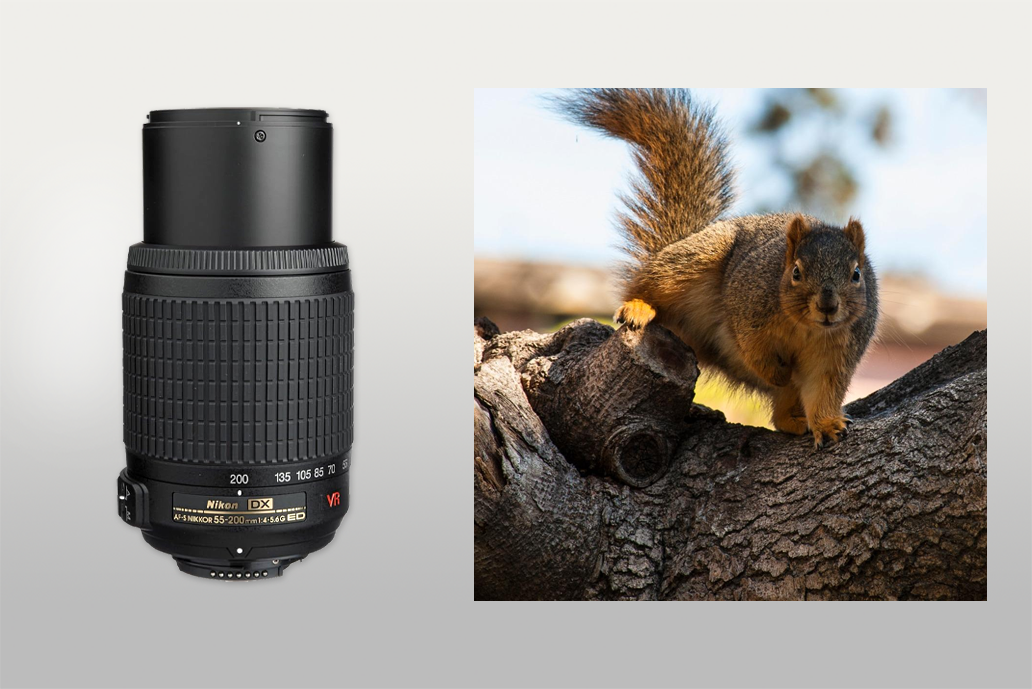
My very first experience with a telephoto lens for wildlife was with this one. It impressed me more than I thought it would. First of all, it is the most budget-friendly pick among other Nikon wildlife lenses, so I expected modest results, but it handled more than I gave it credit for. I tested it on a sunny spring morning in the park and managed to photograph a squirrel mid-climb on a blooming cherry blossom tree.
Carrying this lens is very easy. It’s so compact and light that I barely noticed it in my bag. Thanks to VR, handheld shots come out steady. I even managed to take a photo of a robin perched on a fence at 1/200s. As for zoom range, it is sufficient for photographing ducks, small birds, and even foxes that wander close. The autofocus could be quicker, because I missed a few speedy subjects.
For beginners or anyone curious about taking images of animals with a longer lens, this is the best budget lens for wildlife photography Nikon. Sure, the pictures can be a bit soft at full zoom, and the autofocus isn’t the fastest for moving animals. But considering the price, the performance is surprisingly good.
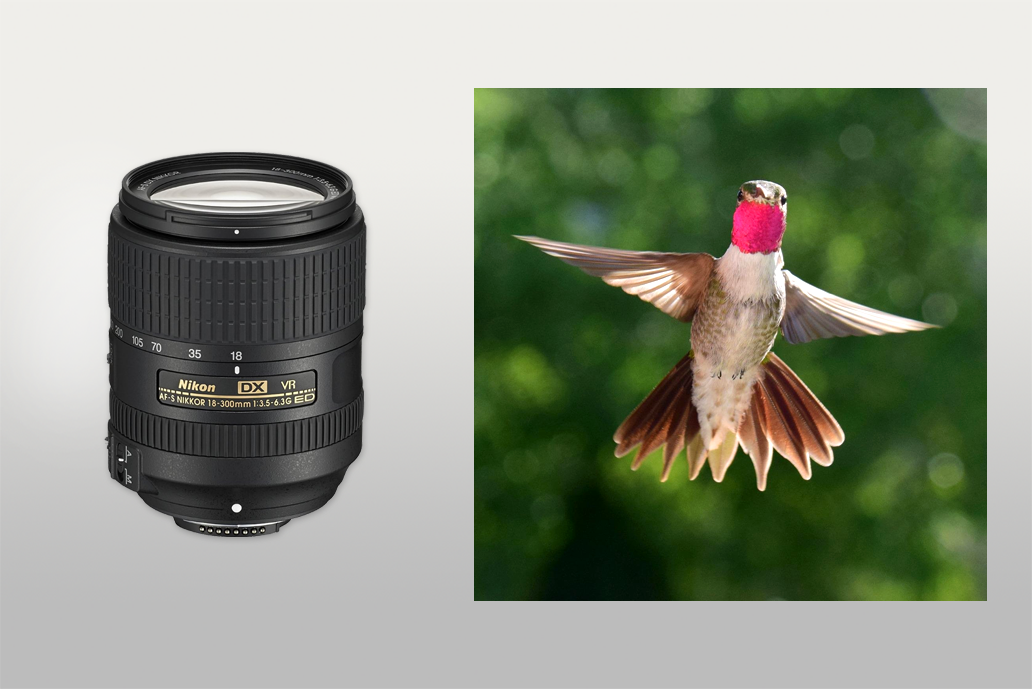
This Nikon super zoom lens usually sits in our studio, but I wanted to see its real potential outdoors. I took it as my only lens for a weekend wildlife adventure. The DX format turns it into a 27–450mm equivalent powerhouse. Therefore, I received an extensive reach for faraway eagles and different animals hiding in dense foliage. Carrying just one lens on a hike made the trip a lot easier.
The lens gave me mixed results. Up to around 150–200mm, it handled sharpness and contrast nicely, especially when the sun emitted flattering light. I came away with great stork photos and a surprisingly neat close-up of a grasshopper. But once I zoomed past 200mm, softness crept in most noticeably around the outer parts of the photo.
The biggest advantage of this lens is its flexibility. Whether I was snapping a wide scenic view or zooming in on a deer that appeared out of nowhere, I could keep shooting without changing lenses. But once again, when you go past 200mm, your images become blurry. Moreover, without a lens hood, you’ll see glare and reduced contrast.
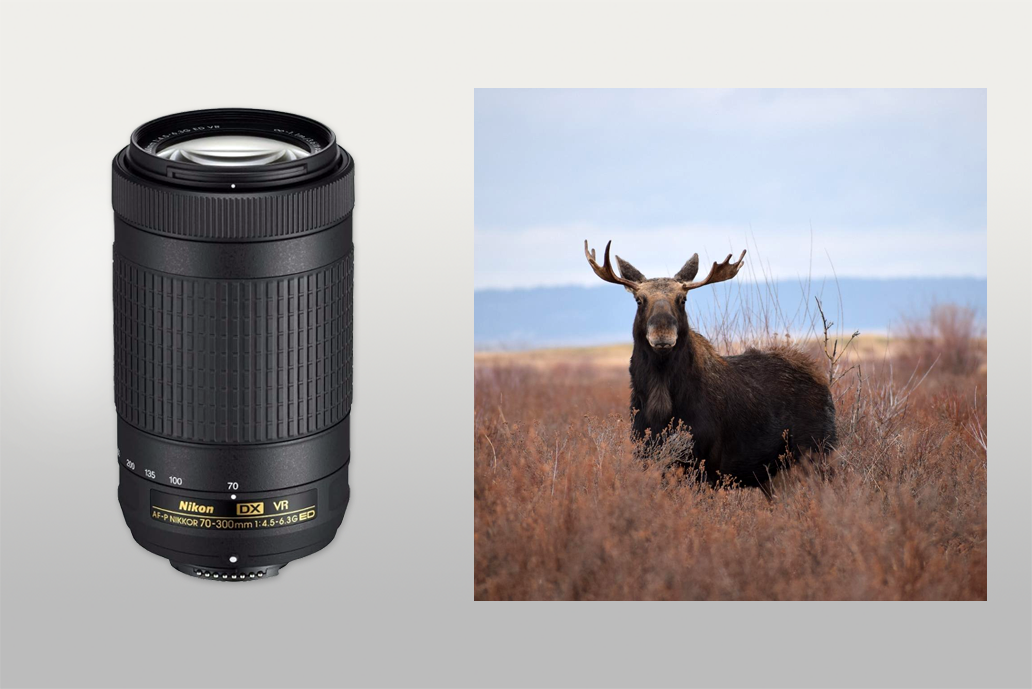
I picked up this 70-300mm Nikon birding lens just to see what it could do. The price was surprisingly low, and the glowing Amazon reviews made me curious. Honestly, I didn’t expect much from such a light, plastic build – but it proved me wrong.
The autofocus was the real surprise. It’s almost completely silent, incredibly quick, and very accurate. Even at 300mm, where many lenses start to struggle, it copes with the task well. I’ve used pricier DX telephotos that can’t keep up this well in AF-C mode. With this lens, I tracked runners coming straight toward me and got many sharp shots. The motor is so smooth and quiet that I sometimes didn’t even notice it had locked focus.
The sharpness was better than I expected. From 70 to 200mm, the lens is very sharp right in the center, especially at f/5.6 to f/11. Even when zoomed all the way to 300mm, it keeps details pretty clear for a budget Nikon telephoto lens. But because it’s an AF-P type, there’s no manual focus ring, and the basic model doesn’t have VR. This became obvious when I tried shooting without a tripod in darker conditions. Some shots were a little blurry.
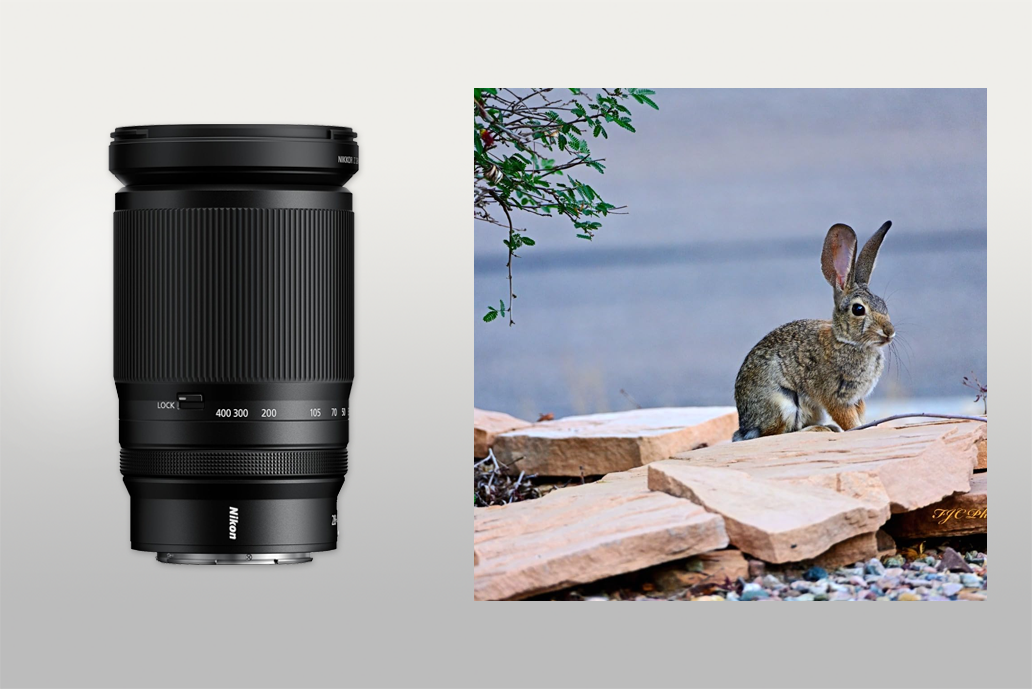
My friend claims this is the best lens for wildlife photography Nikon. So, I decided to borrow it and try it out for a weekend. No, I see why it is so popular. The locks focus quickly, even at the farthest zoom with an f/8 aperture. I tracked a grey heron flying away from the reeds and got sharp photos without much fuss.
I also loved its versatility. I could zoom in to capture a deer far away, then switch to 28mm for a wide landscape shot without swapping lenses. To my mind, this is a perfect lens for any wildlife trip where you never know what will appear next. If you have this superzoom, you don’t need to carry two lenses in your bag.
This model brags about 0.35× magnification. It is helpful for capturing small subjects like insects and fine nature details. Not every lens for wildlife photography can handle close-up shots of mushrooms and moths so easily, without requiring extra gear. Still, in low light, I noticed the focus occasionally shifted at 400mm. It wasn’t a major issue, but I missed several atmospheric photos of flying insects.
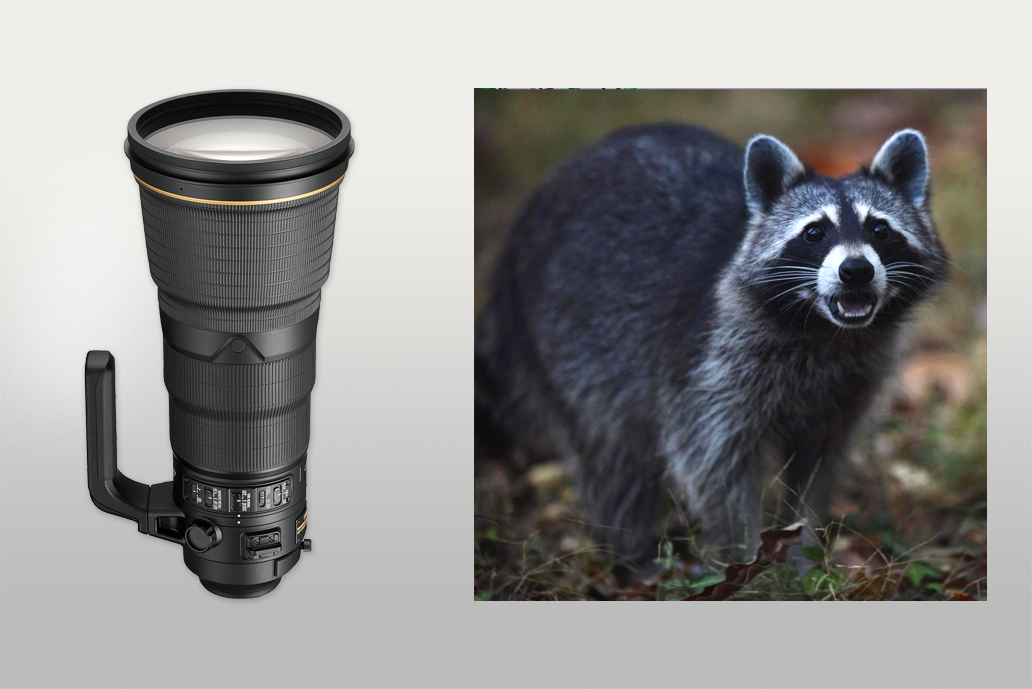
This lens is incredible when it comes to image quality, but it is super expensive, costing about five times more than many camera bodies. So, many people can’t afford it. Still, I borrowed it for a few days to take wildlife photos. That experience completely changed my view on what telephoto lenses can do.
Shooting birds at dusk or animals in the forest shade is a breeze with the f/2.8 aperture. Even with a 2× teleconverter attached, the images stayed sharp and bright, especially after adjusting the aperture. The autofocus worked incredibly fast and steady, making it easier to follow birds in flight even at 800mm zoom.
Keep in mind, this lens is pretty heavy and usually requires a monopod or strong muscles to handle. If you’re a professional shooter, it’s worth the effort. But for most hobbyists, it’s more of a desired lens than something you’d use every day.
To test these Nikon wildlife lenses, we spent several weeks shooting outdoors. I focused on birds flying high in the sky, deer in the morning mist, and foxes walking through open fields. I didn’t believe the specs, but I wanted to find out how each lens works in real life.
Our team tested the lenses on both FX and DX Nikon cameras. Generally, we used the Z8 with an FTZ II adapter and the D500. For some lenses, I also added teleconverters to see if the image quality or autofocus speed got worse and by how much.
One of our main goals was to see how well the lenses could focus on moving subjects. We tested them on animals that were partly hidden by branches or suddenly turned around. I also tried shooting handheld at full zoom to check the effectiveness of vibration reduction. I even counted how many photos were sharp enough.
Comfort and ease of use mattered a lot. I checked how well different Nikon wildlife lenses paired with my camera, whether the setup was light enough to carry all day, and how quickly I could react when animals popped up unexpectedly.
Last but not least was photo quality. We analyzed whether pictures were sharp, how beautiful the background blur was, and how much detail remained at different focal lengths and apertures. Still, the most important thing for me was how the final images looked. I like pictures that are vibrant and lifelike.